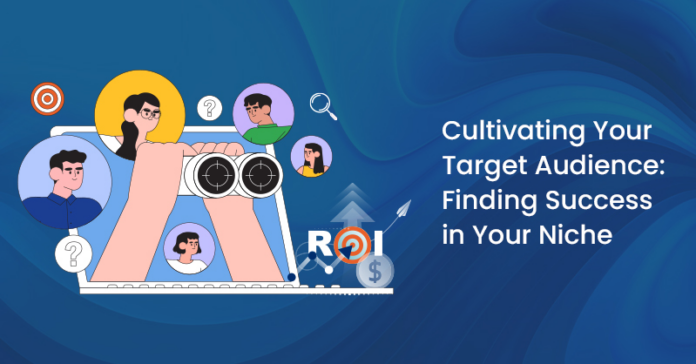The concept of a small business has radically changed with the evolution of the digital era. Once, a brick-and-mortar store was the quintessential dream of entrepreneurship. Today, however, being able to sleep while earning passive income online is the ultimate aspiration for many. This shift reflects the desire of aspiring entrepreneurs to take matters into their own hands and become their own boss for better control over their financial freedom.
But success here is not just a matter of ambition. It’s about how to conduct business in the new digital arena, where the skilled professional is the invisible architect of the World Wide Web. To thrive here, entrepreneurs have to invest precious time in learning the necessary skills or hire the right experts to effectively communicate their message to their target audience.
Ultimately, understanding digital marketing strategies will be what separates business people in a saturated market where the ability to engage with consumers online is sometimes the sole determining factor. Those who embrace these tools and insights can then position themselves better for turning their entrepreneurial dreams into actual reality, helping curate their digital footprint and online identity.
The need, therefore, arises to know your target audience inside-out in the dynamic competitive landscape. Precisely being able to focus on their preferences, behaviours, and needs provides you with a clear direction on how to sculpt your marketing strategies for better resonance, and ensure that a message cuts through the noise.
In this blog, we will get into locating and connecting with your target audience, using user intent to your advantage, and leveraging the power of digital marketing to place you in the centre of your niche.
Understanding Your Target Audience
What is a target audience, and why is it important?
The moment you create a website to establish your online presence, you are automatically competing with over a billion existing entities promoting a wide array of topics. Therefore, it is important to define a target audience to narrow down the competition. For instance, if you’re part of the 2SLGBTQ+ community, you should focus on targeting this audience, maybe through resource guides or something niche like looking for representation of gay athletes, in regards to your favourite sport. You definitely want to zone in and ensure you’re attracting the correct audience.
The target audience is the particular group of consumers or visitors that would be selected as your desired recipients of marketing messages or campaigns. A target audience is a group of potential customers with common characteristics such as demographics, interests, behaviours, or needs that make them more likely to respond to your product or service.
By understanding your target audience, coupled with an intense focus on your niche, you’ll be able to create and curate content that forms the cornerstone of your digital marketing strategy. Doing so, you will essentially be fitting your marketing efforts into effective reach and engagement of an audience, which will actually set you apart in an otherwise oversaturated market.
If you’re a Vancouver Security Company, your target audience is likely someone who is looking for security guards, so you’ll need to identify who these people are, and the type of user intent those individuals will use while surfing the web.
The Importance Of User-Intent
Believe it or not, finding your target audience is far easier than one might imagine; it centres upon learning and understanding the intent of your audience—this is called user intent. You want to try to foresee what your future consumers may be searching for on Google, what they may follow through social media, and what kind of campaigns might need a boost through paid ads to reach them effectively. An understanding of how consumers search for products like yours will help position your brand as a viable option when considering your choices.
What one types into a search engine should be reflected on the pages of your website. Each page should be designed to grab attention based on whatever it is being queried for. In addition, not only is your site important, but so is your presence on social media sites. Try building your social presence by following influencers and other brand-related accounts. Staying actively part of the conversation at every level is key, and visibility is the pathway to viral attention.
Know where you may want to give yourself a strategic boost. If you have a product that requires immediate visibility while you’re still sculpting your online identity, you can expedite your efforts by investing in paid ads. This approach allows you to put your brand directly in front of your target audience, signalling that you have arrived and are ready to meet their needs. Visibility, ultimately, will attract organic attention as you begin to become a known entity within your niche.
It is often better to outsource the work to a digital marketing agency that can help you negotiate all these complexities. The perfect solution will be a team of professionals who will execute your every need and desire to produce exactly what you envision, effectively becoming your most important employee.
Building Your Target Audience
Researching Your Market
The process of building a target audience begins by researching your potential audience. This step identifies and examines the integral characteristics of your ideal consumers. Demographics literally paint a picture of the age, sex, income, and education levels of your audience. However, psychographics-distinguishing traits that involve personality, values, interests, and lifestyles reveal deeper information. Psychographic data gives insight into not only who your audience is, but why they make the purchasing decisions they do.
There are a number of different tools and resources to collect these insights. Google Analytics provides powerful insight into the demographics and behaviours of those visiting your website. Many social media platforms include analytics tools that show who’s engaging with your content and can help inform your strategy. Surveys and polls can go even deeper; by asking your audience directly about preferences and needs, you can make those asks and tailor them accordingly. And, of course, competitor analysis can help find gaps in the market and uncover opportunities to hook an audience.
Source: Shutterstock
How People Search and Engage
Once you have a clearer picture of your target audience, the next step is understanding how they search for information and engage with content online. In turn, the search behaviour widely differs because of the intent of an individual, like looking for general information, wanting to make a purchase, or comparing products. You need to study the language and phrases used by your audience over search engines. The tools, like Google Keyword Planner, will help you find the words and questions relevant to your niche.
Content that resonates with your audience often addresses their specific pain points or interests. Popular formats for attracting engagement include educational blog posts, how-to guides, videos, and infographics. For example, if your target demographic is people interested in fitness, any content that shows workout tips, nutrition advice, or success stories can be used to connect on a deeper level. Also, optimize the content with the relevant keywords, making sure that it reflects the searches people are using. It will improve your chances of visibility and appearance in search results.
Join the Social Media Conversation
Social media is one of the most important ways to connect with your audience in today’s digital world. Knowing your users and relating well with them on Instagram, Facebook, and Twitter helps nurture relationships and build community around one’s brand. To effectively join the conversation, it’s important to share content that interests your audience while inviting interactions. Ask questions, create polls, and publish user-generated content.
Community and conversation around your brand develop loyal customers. Timely responses to comments and messages not only indicate that you value your audience’s contribution but also build relationships. Reaching out to influencers within your niche will also help you tap into broader networks because they often have developed connections with potential customers. Partnering with these people can lend further credibility and exposure, helping your brand be seen as one of the voices in the industry.
Eventually, cultivating your target audience is a continuous process that requires attention and adaptability. Your research into and understanding of your audience, aligning content with their search behaviours, and active engagement on social media will help you advance your brand and build lasting relationships that also contribute to your success in your niche.
Engineering Your Digital Marketing Strategy
When to Use PPC vs. SEO
Knowing when to do Pay-Per-Click (PPC) versus Search Engine Optimization (SEO) will help maximize your digital outreach. Both are used to attain visibility, drive traffic, and facilitate the desired action, but they differ in purposes, objectives, and the speed at which results are generated.
This is especially useful for immediate exposure. If you are launching a new product, running a temporary promotion, or entering a competitive market, PPC can position your ad at the top of search engine results in minutes. This instant exposure allows you to reach potential customers searching for relevant keywords, giving you an edge over those who depend only on organic search.
With PPC, you can target precisely by defining your audience based on demographics, interests, and behaviours. This is perfect for niche markets, where reaching out to the right audience can lead to instant sales. Moreover, PPC campaigns can be easily tracked and measured, enabling you to understand your ROI and make real adjustments in real-time.
On the other hand, SEO is a long-term strategy that builds organic traffic and brand credibility. If your objective is to establish a solid online presence and increase your brand’s authority, then investing in SEO is a must. The results take time, but a well-optimized website reaps prolonged traffic, reduced acquisition costs, and higher user trust. Ideally, the right strategy will balance both PPC and SEO to drive immediate traffic and lay the foundation for long-term growth.
Building a Comprehensive Game Plan
You need to organize your thoughts effectively to incorporate insights about your target audience into your marketing strategy. First of all, define what you are trying to achieve through your marketing. It might be brand awareness, leads, or sales, but whatever it is, having clear objectives will guide your strategy.
Next, take that audience research and build very specific buyer personas representing the actual demographics, psychographics, and behaviours of your target market. This will provide the basis for messaging, content development, and the platforms you should use to engage your audience.
With this in mind, after establishing personas, create a multichannel marketing strategy that is in sync with your audience. Merge content marketing with social media engagement, email campaigns, and paid advertising to facilitate a consistent message across all channels.
Measuring success is important to your game plan. Set KPIs that mean something, like web traffic, conversion rates, and social media traction, and read the metrics on a routine basis. Find audience feedback via surveys and social listening tools that help show how people view your brand and what your audience wants.
Be agile and keep ready to alter your strategy based on this feedback. The digital landscape keeps changing, and what works today may not necessarily work tomorrow. A well-tailored digital marketing strategy in accordance with the preferences of the audience and their behaviours can drive meaningful results and push a business ahead.
Becoming the Juggernaut in Your Niche: The Road to Dominance
To become a leader in your niche, it’s essential to focus on consistently delivering value to your target audience. This starts with understanding their needs, preferences, and pain points, which should guide every aspect of your digital marketing strategy. Regularly provide high-quality content that informs, entertains, or solves problems for your audience. This not only establishes your authority in your field but also fosters trust and loyalty among your customers.
Ongoing education is vital to stay ahead of the game. The digital environment keeps changing, and new trends and consumer behaviours come up now and then. Learn about the latest industry trends, tools, and techniques from workshops, online courses, and networking events. By staying informed about market fluctuations, you can adjust to the changes and take advantage of the new opportunities that come your way, thus keeping your brand in the minds of your audience.

Source: Shutterstock
Conclusion
In summary, nurturing your audience is a multidimensional process that requires profound insight and strategic action. With deep research into the audience, leveraging the power of user intent, and engaging on social media, you have set the base right for your digital marketing campaign. A balanced approach to PPC and SEO would boost visibility and, similarly, a holistic game plan ensures your marketing efforts are also aligned with audience preferences.
Get started in the implementation of strategies that will actually help develop an engaged target audience. Begin your journey with actionable steps to become a thought leader in your niche today.
About TechWyse
At TechWyse, we aim to empower businesses using digital marketing strategies. We have been committed since 2001 to helping businesses like yours achieve their maximum potential online. With headquarters in Toronto, our reach extends globally, and we bring commitment, experience, and skill to each project.
Services Offered
We offer a wide range of services intended to help businesses reach their audiences effectively, including:
Search Engine Optimization: Improve your visibility online and drive organic traffic.
Pay-Per-Click Advertising: Send instant targeted traffic to your site.
Social Media Marketing & Brand Halo: Engage with your community and build brand awareness.
Content Marketing: Develop content that resonates with your audience.
Analytics and Reporting: Make data-driven decisions to optimize your marketing.
If you’re ready to amplify your digital marketing approaches and deepen your understanding of your targeted audience, feel free to get in touch with the experts at TechWyse for a consultation. Let’s join hands together to elevate your brand and drive meaningful results in your niche. Call 866-208-3095 or contact us here.

